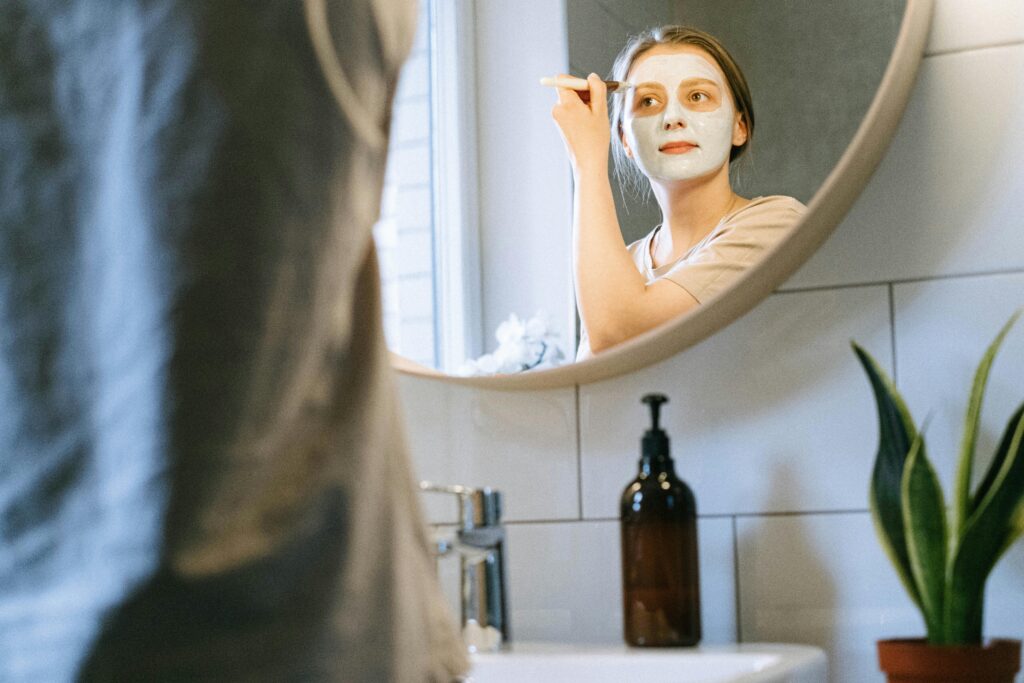Achieving glowing, healthy skin is more than just a matter of genetics—consistent care is key. Developing a daily skincare routine tailored to your skin type can make all the difference in maintaining a radiant complexion. This article will guide you through an ideal daily skincare regimen to help you achieve that sought-after glow.
1.Understanding Your Skin Type
Before diving into a routine, it’s important to identify your skin type to choose products that will work best for you:
Oily skin tends to produce excess oil and is prone to breakouts.
Dry skin can feel tight and rough, lacking moisture.
Combination skin is typically oily in the T-zone (forehead, nose, chin) and dry elsewhere.
Sensitive skin may react easily to products and show redness or irritation.
Normal skin is well-balanced, not too oily or dry.
Knowing your skin type allows you to customize your routine for optimal results.
2.Morning Skincare Routine for Glowing Skin
A good morning routine helps prepare and protect your skin for the day ahead. Here’s a step-by-step guide to your morning regimen:
Step 1:Cleanser
Why? Cleansing in the morning helps remove any oil or bacteria that accumulated overnight.
How to do it: Use a gentle cleanser suitable for your skin type. For oily skin, a foaming or gel-based cleanser can control excess oil. For dry or sensitive skin, opt for a cream-based or hydrating cleanser.
Step 2:Toner
Why? A toner balances the skin’s pH and removes any remaining impurities after cleansing.
How to do it: Apply a toner that suits your skin concerns. If you have oily or acne-prone skin, look for one with ingredients like salicylic acid. For dry or sensitive skin, use a soothing toner with ingredients like rose water or aloe vera.
Step 3:Serum
Why? Serums are concentrated treatments packed with active ingredients that target specific skin concerns, such as brightening, hydration, or anti-aging.
How to do it: Choose a vitamin C serum for its brightening and antioxidant properties. It helps even out skin tone, fights free radicals, and promotes collagen production.
Step 4:Moisturizer
Why? Moisturizing hydrates the skin, locks in moisture, and provides a barrier against external irritants.
How to do it: Use a lightweight, non-greasy moisturizer if you have oily skin. For dry skin, opt for a richer, more hydrating cream. Look for ingredients like hyaluronic acid for hydration and ceramides to strengthen the skin barrier.
Step 5:Sunscreen
Why? Sunscreen is arguably the most important step in any skincare routine, as it protects your skin from harmful UV rays that cause premature aging, sunburn, and skin cancer.
How to do it: Apply a broad-spectrum SPF 30 or higher every morning, even on cloudy days or indoors (UV rays can penetrate windows). Choose a formula that suits your skin type, whether it’s a mattifying sunscreen for oily skin or a hydrating one for dry skin.
3.Evening Skincare Routine for Glowing Skin
Your evening routine focuses on repairing the skin while you sleep. Nighttime is when the skin regenerates and absorbs nutrients more effectively.
Step 1:Cleanser
Why? Cleansing at night removes makeup, dirt, oil, and environmental pollutants that have accumulated during the day.
How to do it: Consider double cleansing—first with an oil-based cleanser to remove makeup and sunscreen, followed by a water-based cleanser to deep-clean the skin.
Step 2:Exfoliation (2-3 times per week)
Why? Exfoliating helps remove dead skin cells that can make your skin look dull and clog your pores, leading to breakouts.
How to do it: Use a chemical exfoliant (like AHAs for dry skin or BHAs for oily skin) or a gentle physical exfoliant to reveal fresher, smoother skin. Don’t exfoliate too often, as over-exfoliating can damage the skin barrier.
Step 3:Toner
Why? As with the morning routine, a toner helps restore your skin’s pH balance and prepare it for treatment products.
How to do it: Use the same toner from your morning routine or choose a nighttime formula with calming ingredients like witch hazel or chamomile.
Step 4: Treatment (Retinol or Spot Treatment)
Why? Nighttime is the best time to use more potent treatments like retinol or acids. These products help with skin cell turnover, minimizing fine lines, acne, and hyperpigmentation.
How to do it: Start slow with retinol (2-3 times a week) if you’re new to it. It can make the skin sensitive, so build tolerance over time.
Step 5:Eye Cream
Why? The skin around the eyes is delicate and prone to signs of aging, such as dark circles and wrinkles.
How to do it: Use a hydrating eye cream with ingredients like peptides and caffeine to reduce puffiness and brighten the under-eye area.
Step 6: Moisturizer (Night Cream)
Why? Night creams are typically more hydrating and heavier than day moisturizers, providing extra nourishment and allowing the skin to repair itself overnight.
How to do it: Use a rich, nourishing night cream or sleeping mask, especially if your skin tends to dry out overnight.
4.Extra Tips for Glowing Skin
Hydrate: Drinking plenty of water throughout the day is essential for maintaining hydrated, glowing skin.
Eat a Balanced Diet: Nutrient-rich foods, especially those high in antioxidants (like berries, green leafy vegetables, and nuts), promote skin health from the inside out.
Get Enough Sleep: Beauty sleep is real! Aim for 7-9 hours of sleep per night to allow your skin to repair and regenerate.
Avoid Stress: Stress can trigger skin issues like breakouts or dullness, so practice stress-relieving activities like meditation, yoga, or deep breathing.
Conclusion: Consistency is Key
A glowing complexion doesn’t happen overnight. Consistency in your daily skincare routine, along with a healthy lifestyle, is the key to achieving long-lasting, radiant skin. By following this simple yet effective regimen, you’ll be well on your way to a natural glow that radiates from the inside out.




